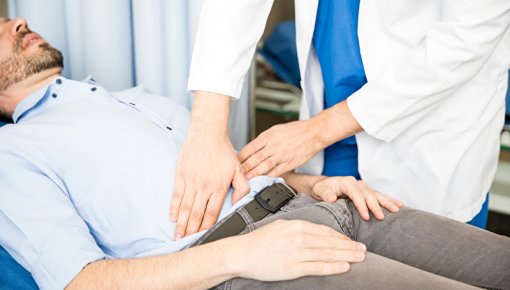How is functional dyspepsia diagnosed?

Functional dyspepsia can only be diagnosed once other diseases have been ruled out. The first step is a talk with the doctor and a physical examination. Other examinations, like blood and stool tests, usually follow.
Functional dyspepsia can cause various digestive symptoms like pain in the upper abdomen (belly) and a feeling of fullness. Because digestive problems can also have physical causes, those causes have to be ruled out first. If no physical causes can be found, functional dyspepsia is the most likely explanation for the symptoms. It can take a while to go through the process of elimination before this diagnosis is made.
Around half of stomach problems in adults are triggered or exacerbated by other causes such as inflammation or medication. So it is important to check out these possible causes first. The problems can then be relieved by specific treatment or changing your medication.
